Raising Water Consciousness through
World’s Biggest Photo Exhibition and
Largest collection of Photo Stories on Water
Photo Stories | Water and Culture
Men and Water Needs from Gender Perspective
Nandita Singh and Om Prakash Singh
27 September, 2016
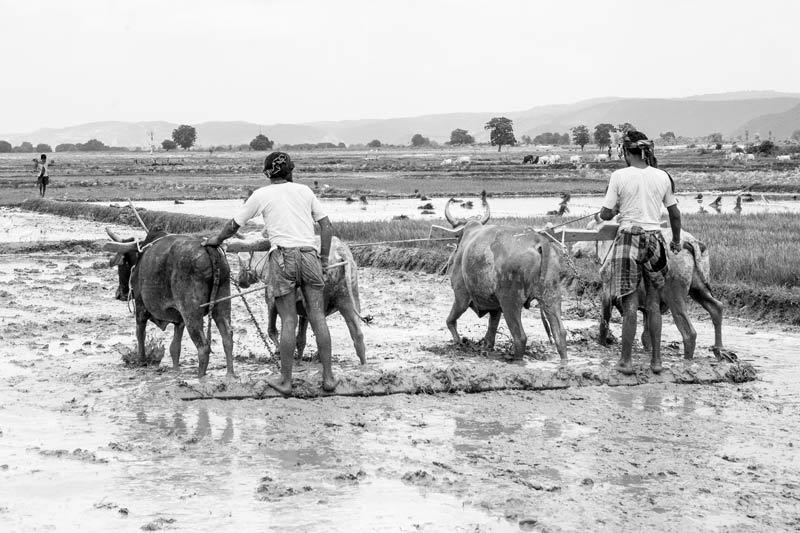
In India, water needs of men are multifarious, ranging from their personal needs to those for performance of diversified gender-based social and economic roles within families and society. Numbering more than 623 million, at the personal level all men require water for drinking, and for sanitation, health and hygiene. In some cases, they may also need water for cooking for themselves and their dependents. Sometimes, men also share the gender responsibility of caring for children and dependents at home, and require water in that regard. Further water may be needed for undertaking religious functions. The most important gender-based need for which water is often associated with men relates to their economic role. In India, about 25 million men have been identified as cultivators while another 25 million men as agricultural laborers, according to the 2011 census. Water is a necessary input for agricultural processes, particularly for raising crops. Whether growing cereals, pulses or oilseeds, water is a basic prerequisite either through rainfall or irrigation. Vegetable cropping is alsom being increasingly practiced by male farmers commercially and this generally requires water for irrigation and beyond for washing the product for the market. Many men also earn a livelihood through animal husbandry and water is needed for their livestock. Fishery is another important economic activity in which men engage and this is not possible without water. According to official estimates, a total of more than 14 million population engages in fishing-related activities in the country, of which about half are men. Many other businesses and industry also need water such as in the construction, textiles and manufacturing industries, water is an important resource and these sectors engage men in large numbers as owners as well as workers. Besides, smaller businesses such as restaurants and brick kilns engage men and need water. Men may also be involved in community level services that requiire water. In present times, water resources are growing scarce in terms of quantity as well as quality and consequently posing multiple challenges to men in fulfilling their water needs. This photo story presents a virtual journey of the diverse water needs of men, throwing up food for thought on the challenges facing this lesser conspicuous gender group in the water world. The title photo depicts men levelling water-logged fields for paddy transplantation in Munger district, Bihar.
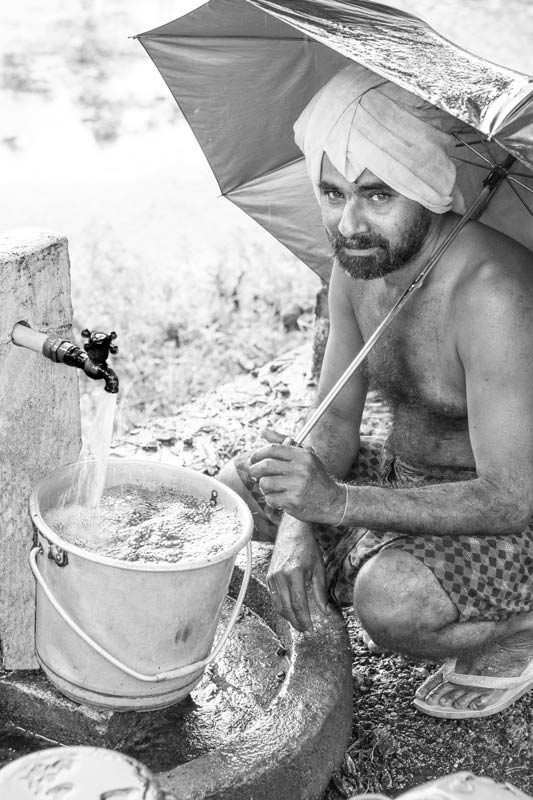
Collecting water from a public tapstand for home use in Alappuzha district, Kerala
Men need water for own bathing, washing, cleaning, and also sanitation. Sometimes, they also assist women in fetching water for the household. Further, they may sometimes also need water for fulfilling shared domestic responsibilities such as caring for children and the sick. For fulfilling all these needs, the water supply should be continuous, adequate, reliable, safe and affordable, but access to domestic water is becoming an ever increasing challenge in peri-urban as well as rural settings.
-copy-4.jpg)
Enjoying a bath at a rejuvenated well in Alwar district, Rajasthan
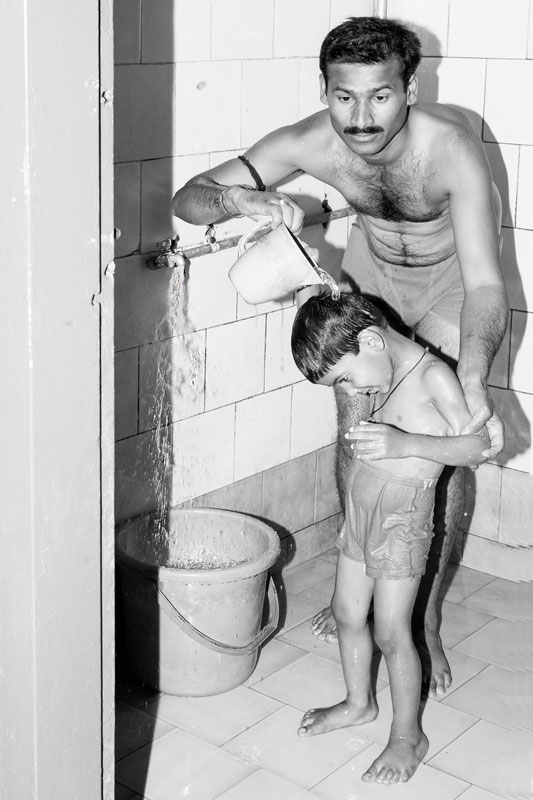
Helping young son bathe in Ahmednagar district, Maharashtra
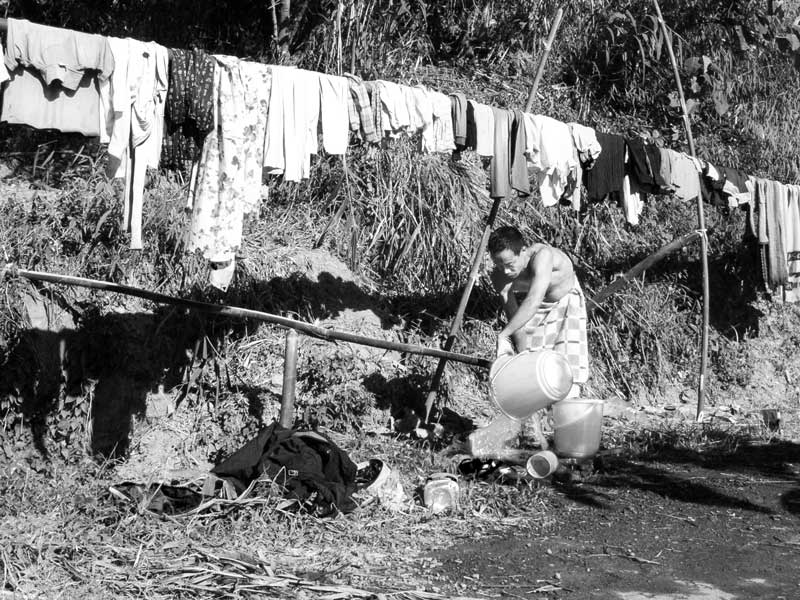
Doing one's own laundry in Mokokchung district, Nagaland
Many men prefer to wash their own clothes. With presence of a reliable water source at home, this is easy but where water availability is seasonal or inadequate, not only laundry but even bathing and personal hygiene may become a challenge. In Nagaland in North-East India, villages are generally located on hill tops, and with increasing deforestation for various reasons, water availability near home has reduced to barely 3-4 months after monsoon. During rest of the year, men have to find alternate water sources far away where they can bathe and wash once in perhaps several days.
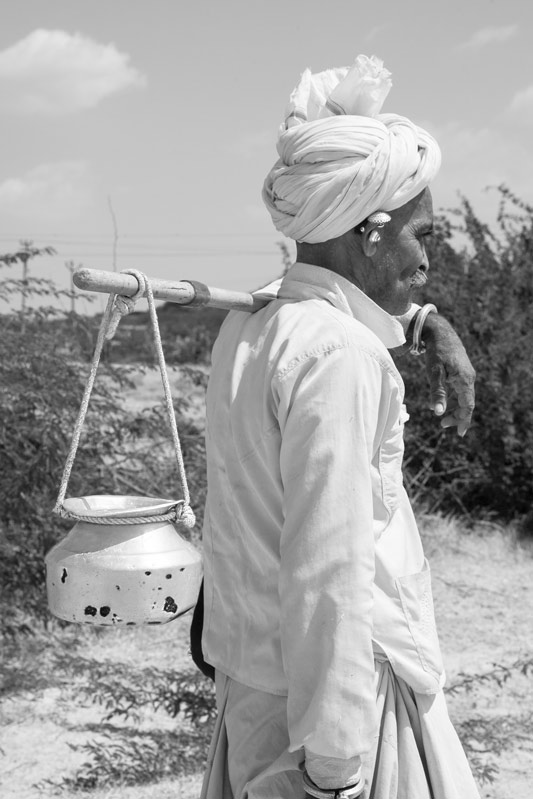
Carrying water for drinking in the field in Kutch district, Gujarat
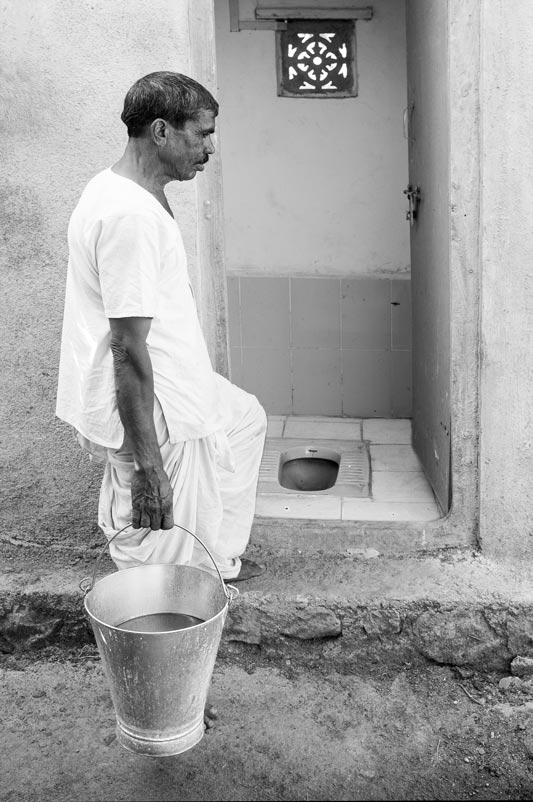
Carrying water for sanitation in Ahmednagar district, Maharashtra
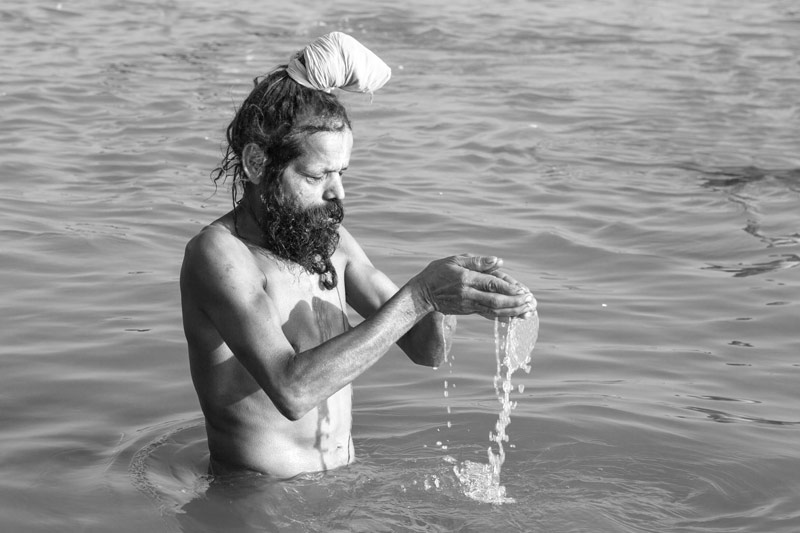
A holy man performing a religious bath in Sangam at Prayag (Allahabad), Uttar Pradesh
Men may need water for undertaking religious functions at societal and individual levels, for example, as priests or heads of household. However, drying up of rivers, wells, sacred ponds, and other surface water sources may thwart this function. Similarly increasing water pollution can hurt their religious sentiments. Religion is an intricate part of culture, and the inability to practice the rites and rituals connected to water in the right spirit can thwart enjoyment of the human rights of not only men but also other related family or societal members.
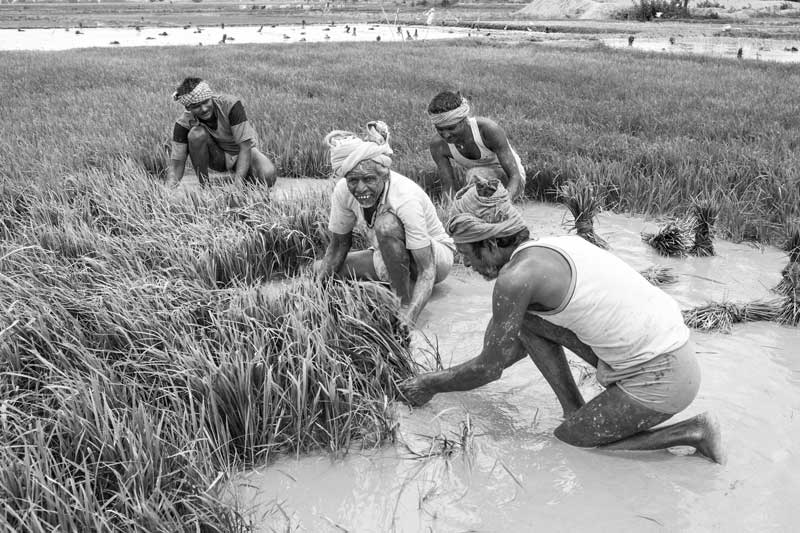
Uprooting paddy seedlings for transplantation in Munger district, Bihar
Agriculture is primarily men's economic arena and is not possible without water. Some crops like pearl millet can be grown rain-fed but many others require irrigation. Paddy is a water intensive crop which requires fields to be flooded with water for transplantation and during a substantial part of the growth cycle. In some areas such as in Bihar, farmers depend much on monsoon rains for paddy cultivation, but face challenge when rains are delayed, forcing them to abandon the monsoon crop. In some other parts, such as in Punjab and Haryana, paddy cultivation has thrived on irrigation based on canals and groundwater. In these areas, reduced canal discharge or overexploitation of groundwater has led to lowered yields, plunging farmers into debt traps. Water quality can also be an obstacle to good productivity. For example, in many areas salinity in groundwater is becoming a challenge.
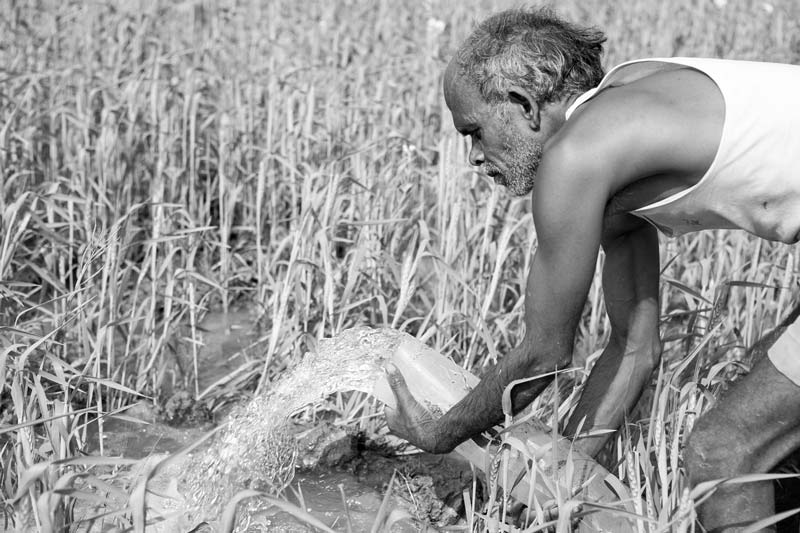
Irrigating wheat fields in Bhojpur district, Bihar
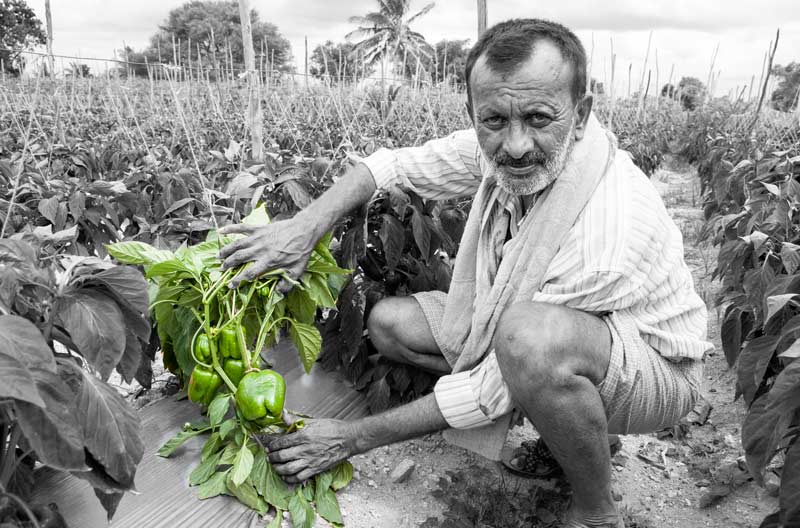
Growing capsicum as cash crop using drip irrigation in Mandya district, Karnataka
Commercial vegetable cropping too requires irrigation, and so does washing them for sale in the market. In water scarce areas, drip irrigation and other water saving technologies can help farmers address the challenge.
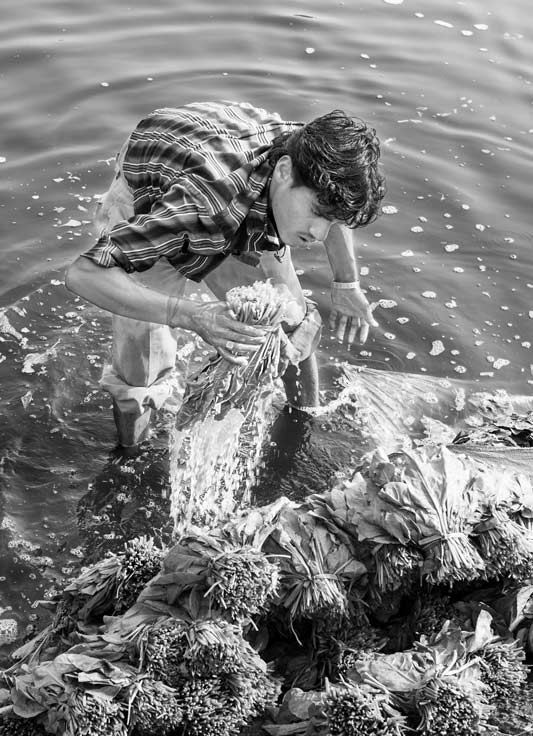
Washing spinach for sale in South East district, National Capital Territory of Delhi
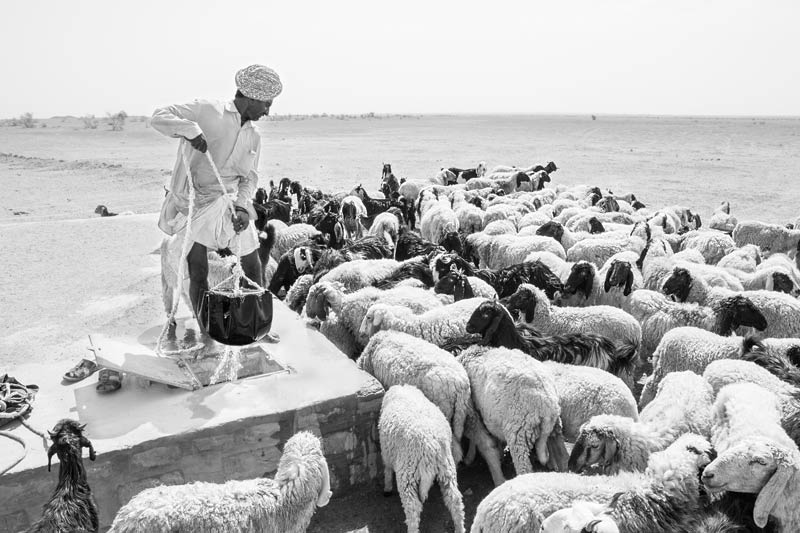
A shepherd helping his animals drink water on a hot summer day from a 'tanka' (underground water tank) in Jaisalmer district, Rajasthan
In semi-arid and arid regions of the country, animal herding is a common livelihood for men, particularly since agriculture may be unreliable due to climatic vagaries. It is also common on the mountains, where agriculture may be limited, especially on high altitudes. On the whole, animal husbandry is also an integral part of agriculture, with men and boys generally shouldering the responsibility of cattle tending outdoors. Animal herding depends much on water. A steady supply of 'blue' water for animals to drink as well as adequate 'green' water for continued fodder supply is necessary. This water need of men is increasingly challenged as drinking water sources for animals are becoming seasonal or even disappearing and pastures drying up.
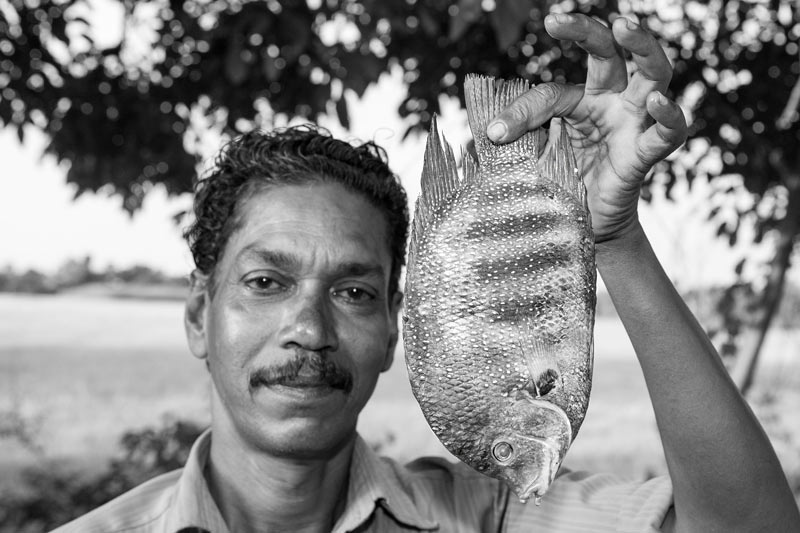
A fisherman displaying Karimeen (Etroplus suratensis) – a common fish caught in the Vembanad Lake in Alappuzha district, Kerala
The fisheries sector thrives on water, where men have an important stake. The coastline of India is more than 8000 km long, along which over 3 million fishermen live in more than 3000 villages. Additionally, many fishermen are engaged in inland fishing on numerous rivers and ponds or raise fish in ponds. Climate change is making a deep impact on coastal fishermen's livelihoods as change in physical qualities of water is affecting fish populations. For inland fishermen, many streams and rivers are drying up due to over-abstraction of water for municipal, agricultural and industrial uses or getting increasingly polluted from these sources, depleting fish populations. Climate change poses further complications. In Vembanad, the longest lake in the country, fish count has been steadily declining. Fish population is affected by changes in waterscape and surrounding landscape on account of expanding agricultural polders, pollution from solid wastes such as plastic, pesticides & fertilizer runoffs from paddy fields, loss of mangroves and growth of exotic weeds.
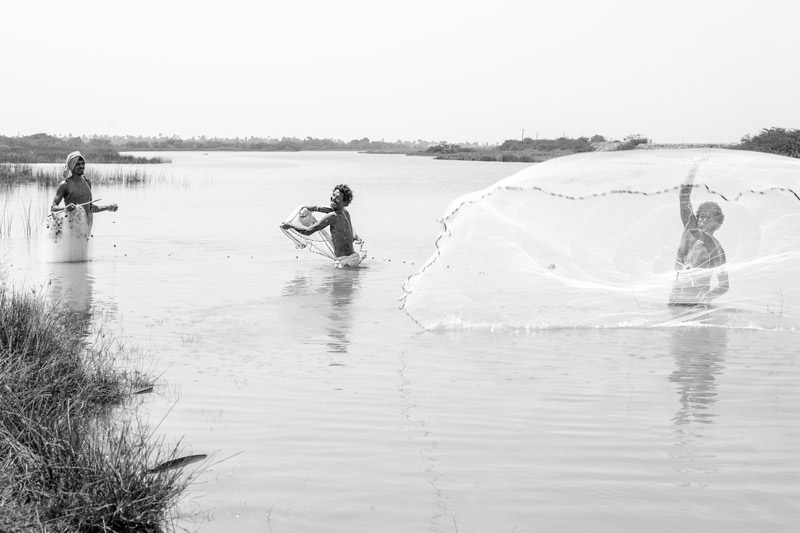
Engaged in fishing in a stream in Nellore district, Andhra Pradesh
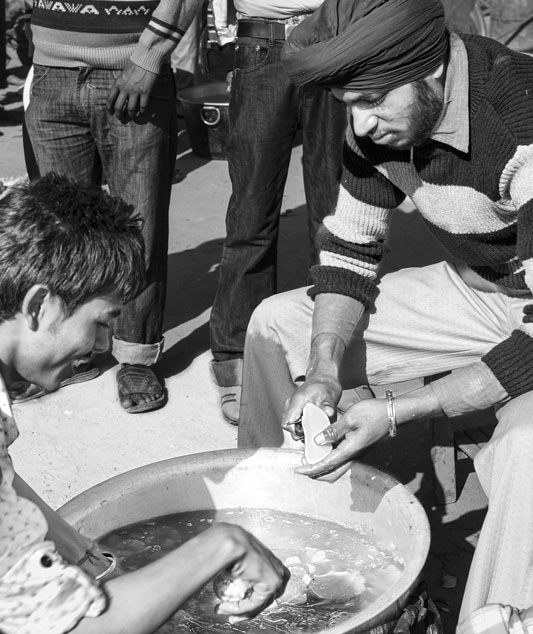
Cutting and washing vegetables at a community kitchen in Haridwar district, Uttarakhand
A journey through the multifarious water needs of men shows that in comparison to women, in many instances, men’s water needs may be seasonal but larger in quantum, agriculture being an important example which alone is known to utilize over 70% of global water resources. However, like women, they also have personal and social needs which require water round the year but in smaller quantities. On the whole, it is also to be noted that men are often the breadwinners at family level. Consequently, fulfilment of their water needs related to economic pursuits is vital for the survival and well-being of their families, and therefore for realization of the various human rights of the dependent women and children. Fulfilment of men's water needs at personal and social levels is also essential since realization of their own human right to water is important for protection of their other human rights, such as health, development and culture. It is hence quintessential that the challenges confronting men’s water access for fulfilling their diverse needs be urgently and appropriately addressed so that sustainable development can be promoted.